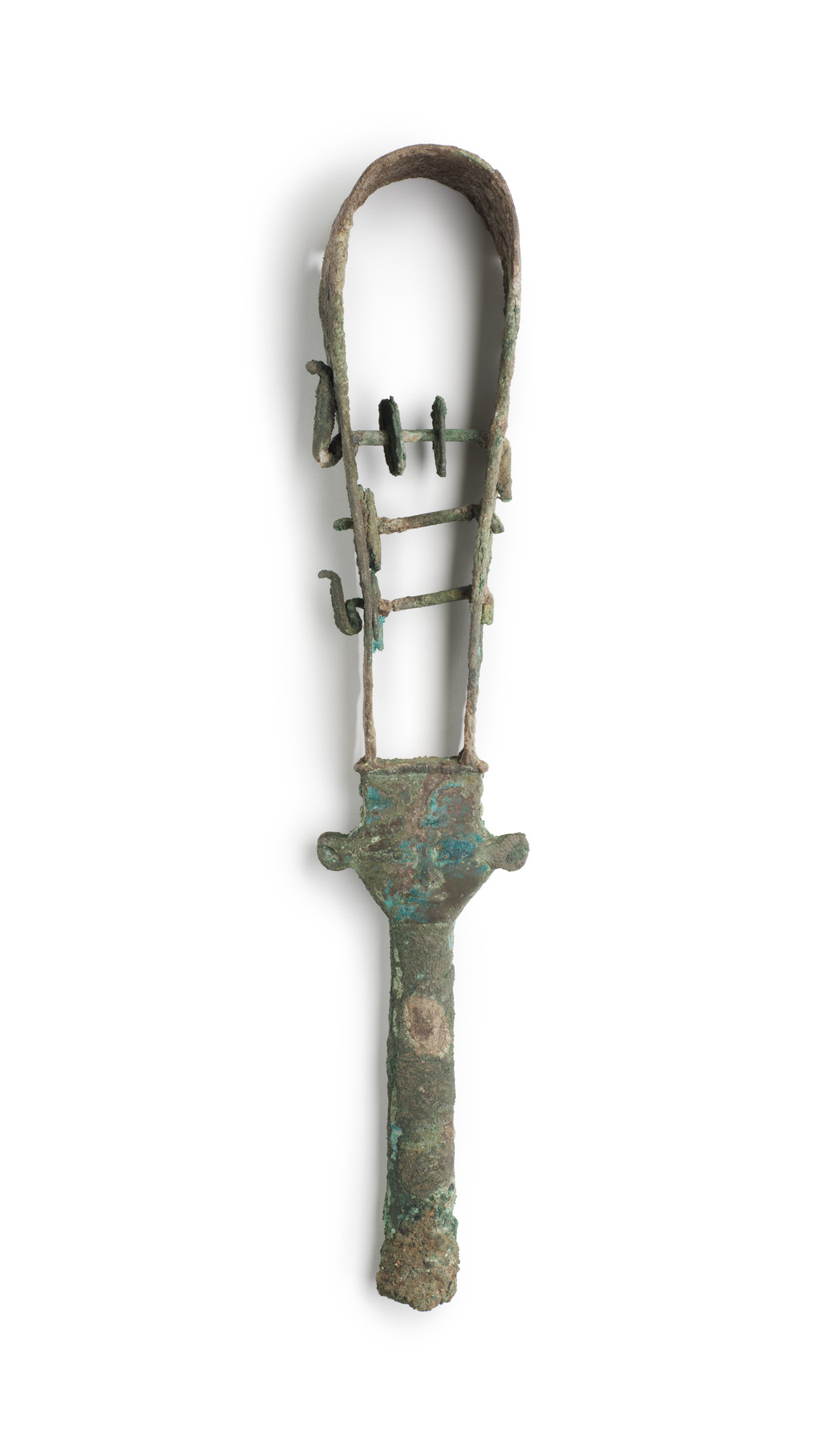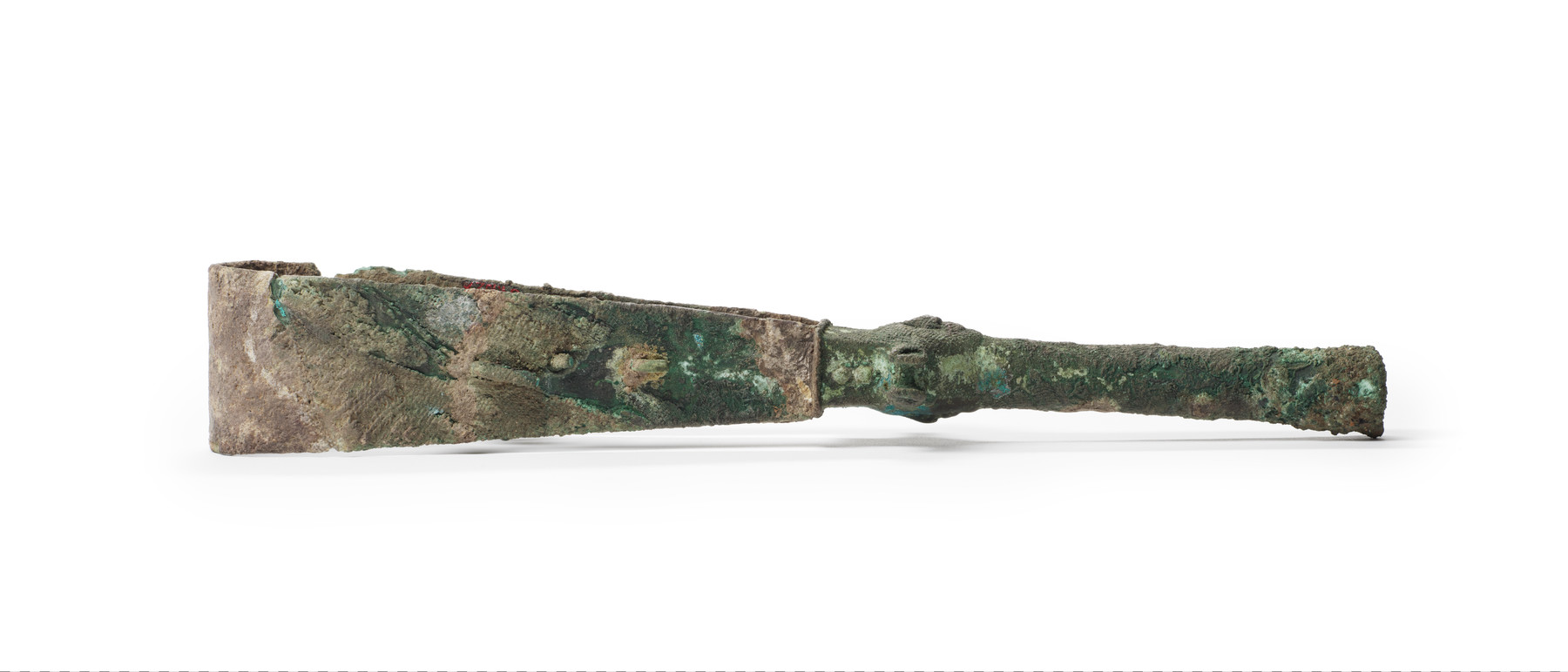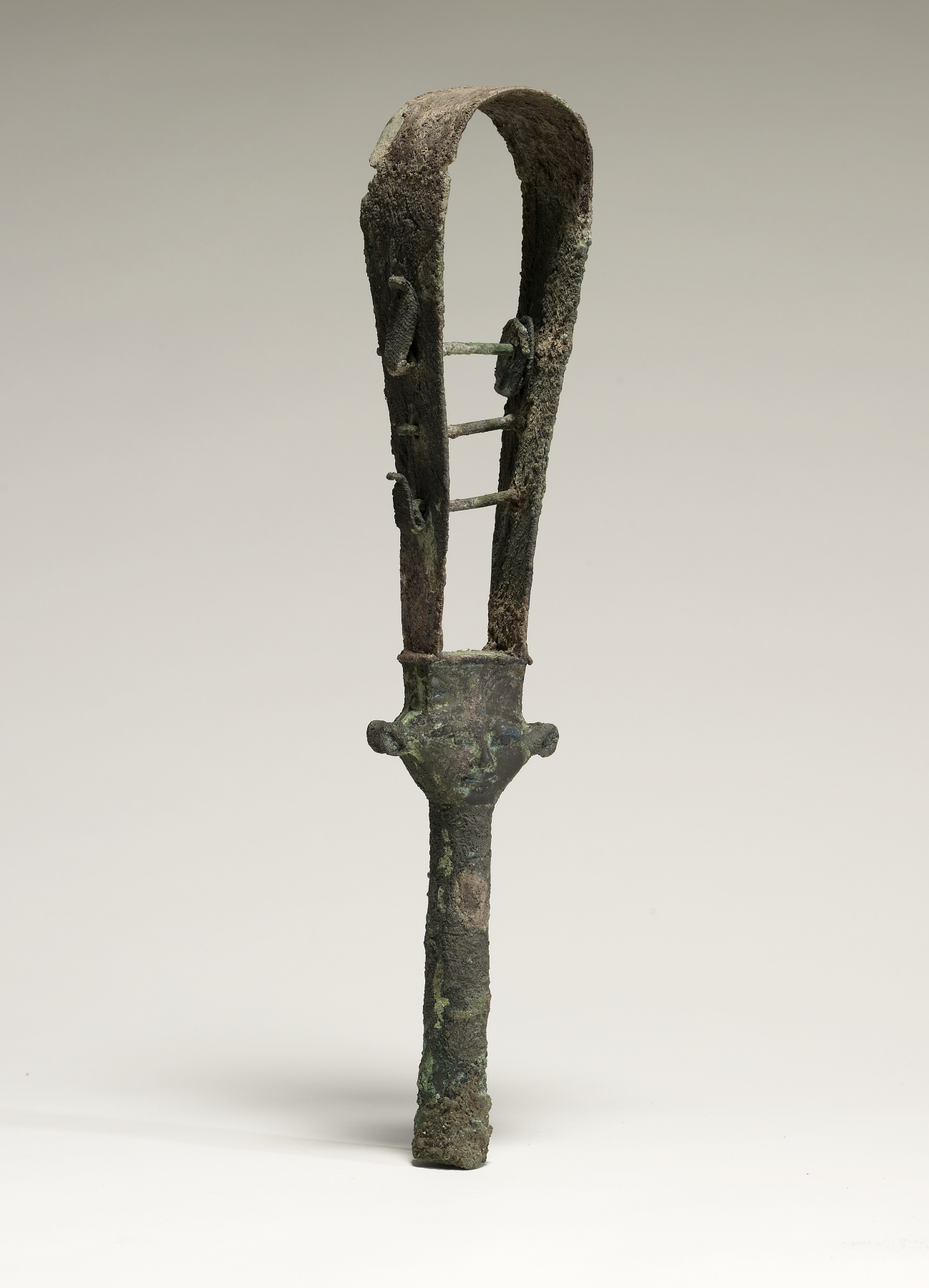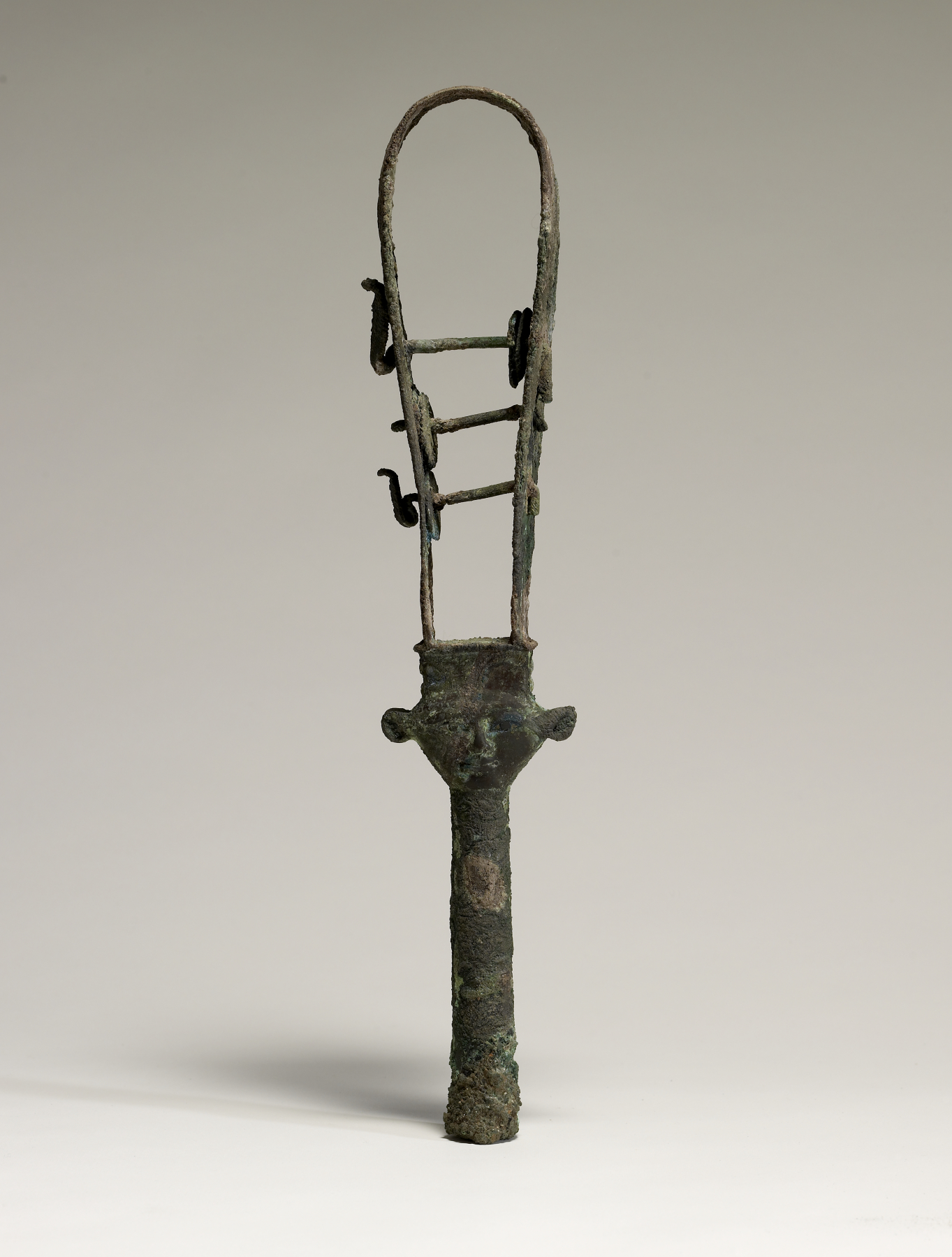Sistrum
(Ancient Egypt and Nubia )
The sistrum is a musical rattling instrument that was popular in the cult of the goddess Hathor. Called a "seshsehet" in Egyptian, the name imitates the swishing sound the small metal disks made when the instrument was shaken. Priestesses and royal women participating in rituals and ceremonies at temples and shrines played the sistrum.
The face of the goddess Hathor is depicted with cow ears on the handle of the rattle.
Provenance
Provenance (from the French provenir, 'to come from/forth') is the chronology of the ownership, custody, or location of a historical object. Learn more about provenance at the Walters.
Maurice Nahman, Cairo and Paris [date and mode of acquisition unknown]; Henry Walters, Baltimore, 1930, by purchase; Walters Art Museum, 1931, by bequest.
Exhibitions
| 2013-2014 | Egypt’s Mysterious Book of the Faiyum. The Walters Art Museum, Baltimore. |
Conservation
| Date | Description | Narrative |
|---|---|---|
| 4/30/1957 | Treatment | cleaned |
| 10/24/1991 | Loan Consideration | examined for loan |
| 2/6/2001 | Treatment | cleaned; loss compensation; repaired |
Geographies
Egypt (Place of Origin)
Measurements
H: 14 5/16 in. (36.3 cm)
Credit Line
Acquired by Henry Walters, 1930
Location in Museum
Accession Number
In libraries, galleries, museums, and archives, an accession number is a unique identifier assigned to each object in the collection.
In libraries, galleries, museums, and archives, an accession number is a unique identifier assigned to each object in the collection.
54.1207












